Montana’s Silver Bow Creek Greenway Trail
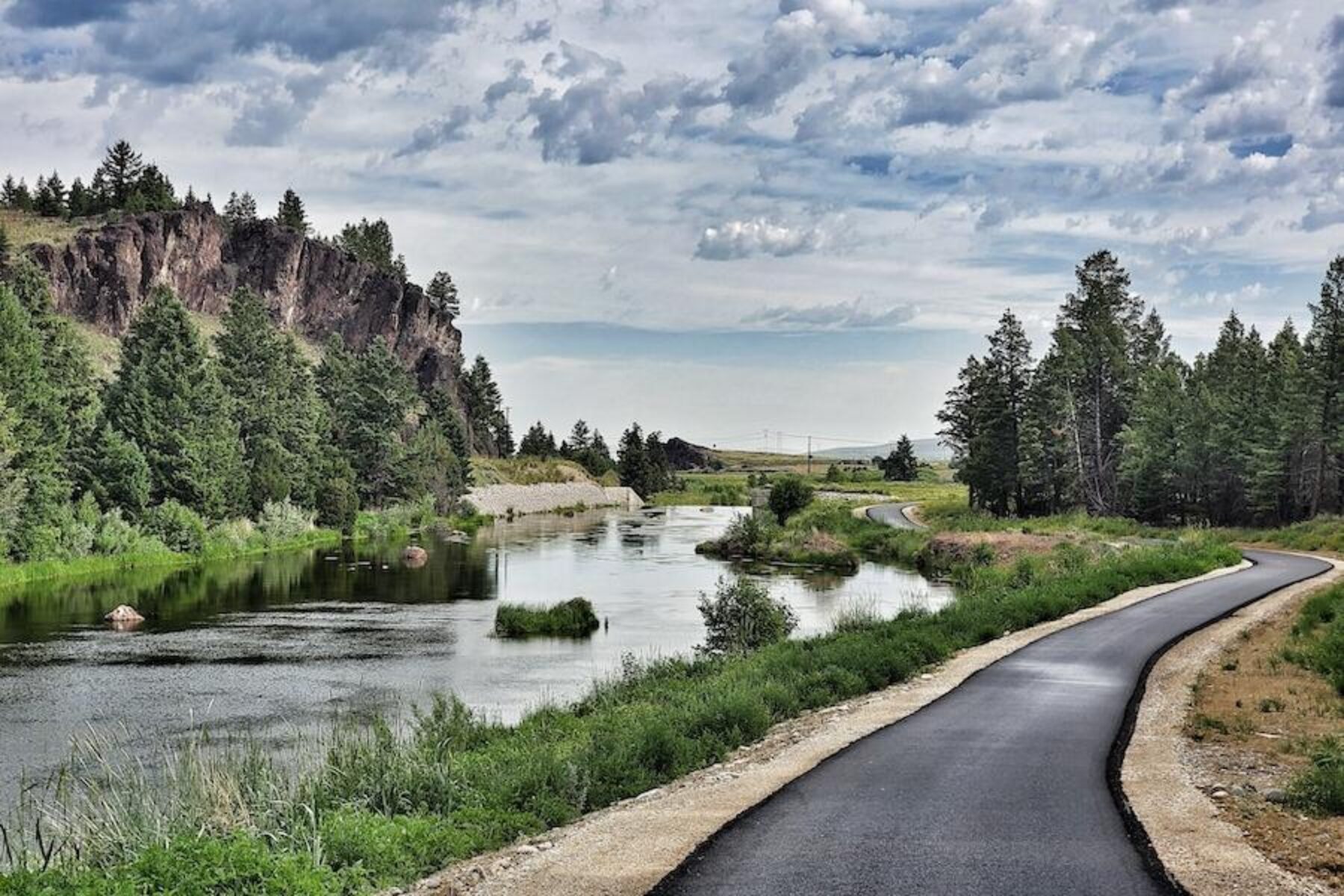
Trail of the Month: November 2023
“This stream has been completely rebuilt. And now we watch and wait and see what it’s capable of becoming.”
—Joe Griffin, a retired hydrogeologist from Butte
In a grassland rimmed with lavender-colored, snow-dusted mountain peaks, Montana’s Silver Bow Creek Greenway Trail parallels its namesake creek, which provides habitat to bald eagles and yellow-headed blackbirds, sandhill cranes and waterfowl. Thick native grasses and rocky outcroppings shelter moose, deer, beavers and rabbits, and locals have reported seeing cougar tracks and bear scat.
“The trail is so serene and quiet—that’s what I love about it,” said Mike Patterson, Butte resident and retired water plant manager who enjoys running and bicycling on the trail. “There is a trail network in the town of Butte, and it’s nice. But out on the greenway trail, there’s no noise pollution, no distractions. And it’s the only trail around that’s plowed in winter, so I’m on it year-round.”
This past October, the pathway grew to 15 miles—ever closer to its eventual 26-mile span—with a new segment opening between Crackerville and Opportunity. The scenery along the route is one of a vibrant ecosystem typical of the American West. But in Butte, locals count it something of a miracle. Because as recently as the 1990s, this landscape sat in a toxic waste field.
From Riches to Run-off
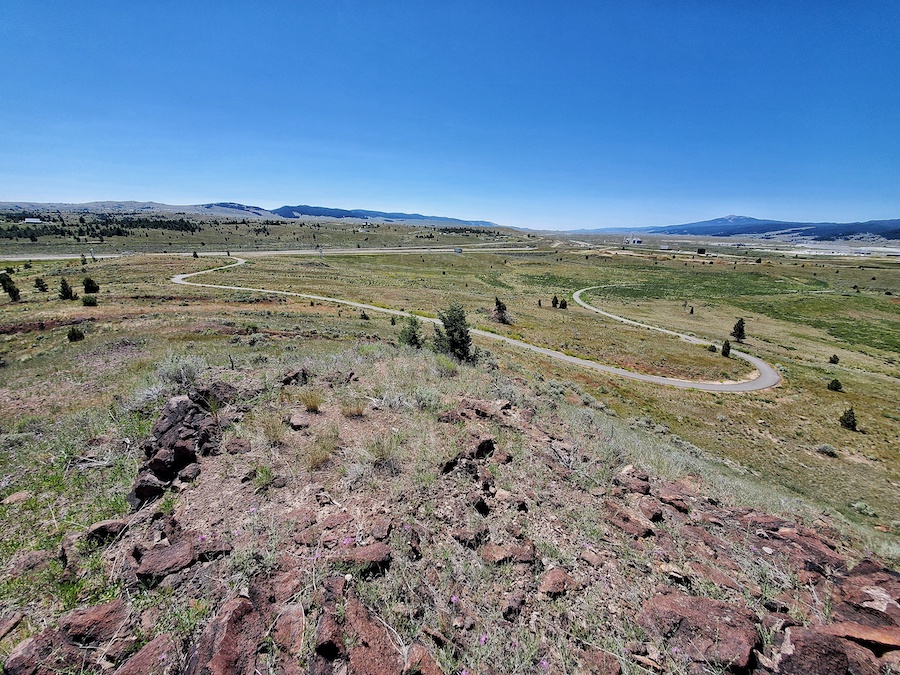
The tale of the trail starts in the 1860s, when settlers to the future Montana turned up unimaginably large mineral deposits. The mining frenzy began with the discovery of gold west of modern-day Butte. Large deposits of silver followed.
But it was copper that eventually turned Butte into “the richest hill on earth.” By 1896, the mining works around Butte were producing 210 million pounds of copper every year, more than anywhere in the world. Mines employed 8,000 people, and tens of thousands of barkeepers, hoteliers, restaurateurs and entertainers poured in to serve them. The lust for minerals and the increasingly aggressive methods required to extract them only grew as America sought electrification and armaments for World Wars I and II.
To support the mining community, the Silver Bow Creek was utilized as an industrial drain to carry away human sewage and toxic mining chemicals like lead, arsenic and zinc. Contaminants leached out of mine tailings into the aquifer. And spring flooding exacerbated the pollution. A particularly devasting deluge in 1908 carried countless tons of untreated sewage and mining byproducts across a 140-mile swath that measured 10 feet deep in some areas.
“There is no vegetation that can grow in 10 feet of toxic waste,” said Dori Skrukrud, who serves as the community development coordinator for the City and County of Butte-Silver Bow and is the person locals credit with shepherding the Silver Bow Creek Greenway Trail project. “Dispersed contaminants killed the riparian flood plain. There was no habitat in land or in water. It looked like a lunar landscape.”
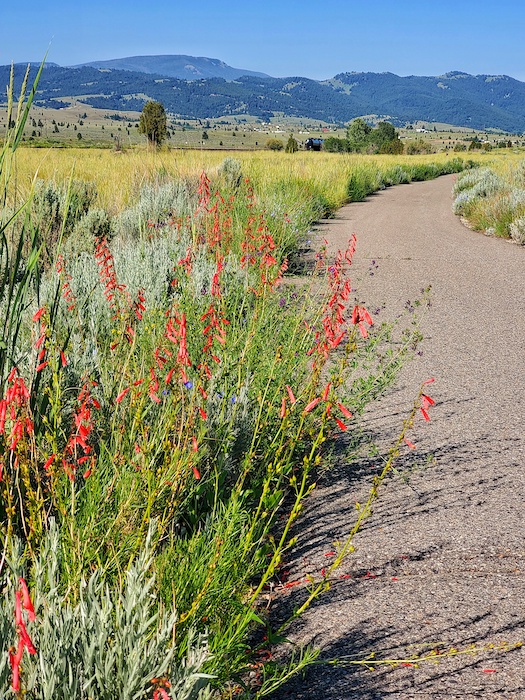
In the mid-1980s, Silver Bow Creek and Butte were listed by the Environmental Protection Agency as Superfund sites, paving the way for the cleanup of its toxic waste. In 2000, the state of Montana won a settlement with the mining company ARCO to go beyond mere cleanup. In addition to hauling away contaminants, the corporation was required to fund a return of the landscape to something approaching its natural condition.
Joe Griffin, a retired hydrogeologist from Butte, watched the landscape’s evolution with fascination. “Silver Bow Creek is a completely novel ecosystem today,” he said, explaining how engineers physically averted the stream to a hand-dug channel, scooped out and removed all the contaminants from the natural creek bed, and then redirected the water back to its original route. “This stream has been completely rebuilt. And now we watch and wait and see what it’s capable of becoming.”
Skrukrud, who has been at the forefront of the greenway’s preservation efforts since 1998, noted, “The mandate was to restore the landscape and also to provide restorative activities. For 100 years, the creek and the surrounding environment had been entirely inaccessible. That had to be reversed.”
Those “restorative activities” included not only habitable land and fishable streams, but also the means to get out and enjoy them—thus, the Silver Bow Creek Greenway Trail.
Patterson, as an avid runner, can’t help but note that the trail’s anticipated final length is very nearly the official marathon distance of 26.2 miles. “I would love to organize a marathon along the Silver Bow Creek Greenway Trail when it’s finished,” he said. “That’s a few years down the road, but that’s my dream.”
Highlights of the Trail
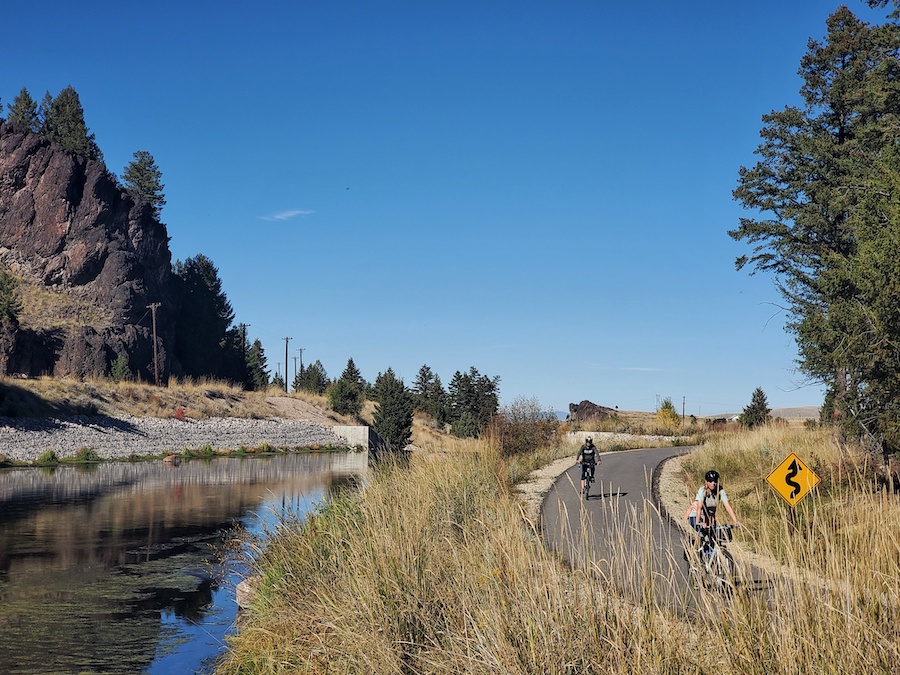
The greenway follows the roughly C-shaped railbed of the Butte, Anaconda & Pacific Railway, which carried materials, labor and ore to operations throughout the Butte area. The railbed in turn follows the Silver Bow Creek. While 15 miles of the trail have been completed, the finished segments do not yet connect with one another. Still to be developed are the Durant Canyon segment, a 5-mile stretch through a dramatic sandstone gorge; a 3-mile connector between Durant Canyon and the existing Butte trail; and extensions at both ends of the trail in Butte and Opportunity. The entire 26-mile project is expected to be complete in 2028.
With the exception of the Durant Canyon segment, which organizers expect to surface with hard-packed gravel in 2024, the greenway is paved and leads through a valley between the Anaconda and Flint Ranges, a broad, flat grassland largely free of trees, and thick with rabbitbrush, sagebrush and willows. In warm weather, salsify, red penstemons, sunflowers and lupines bloom. In winter, snow blankets the landscape, although the trail is plowed.
After the greenway departs Butte, there is little in the way of services or towns to pass through. The wide-open landscape that gave Montana the moniker “Big Sky Country” is all that visitors see.
Richard Gibson visits the greenway nearly every day on his bicycle. A geologist and historian from Butte, Gibson finds himself drawn to the interesting rocks and historical sites along the pathway.
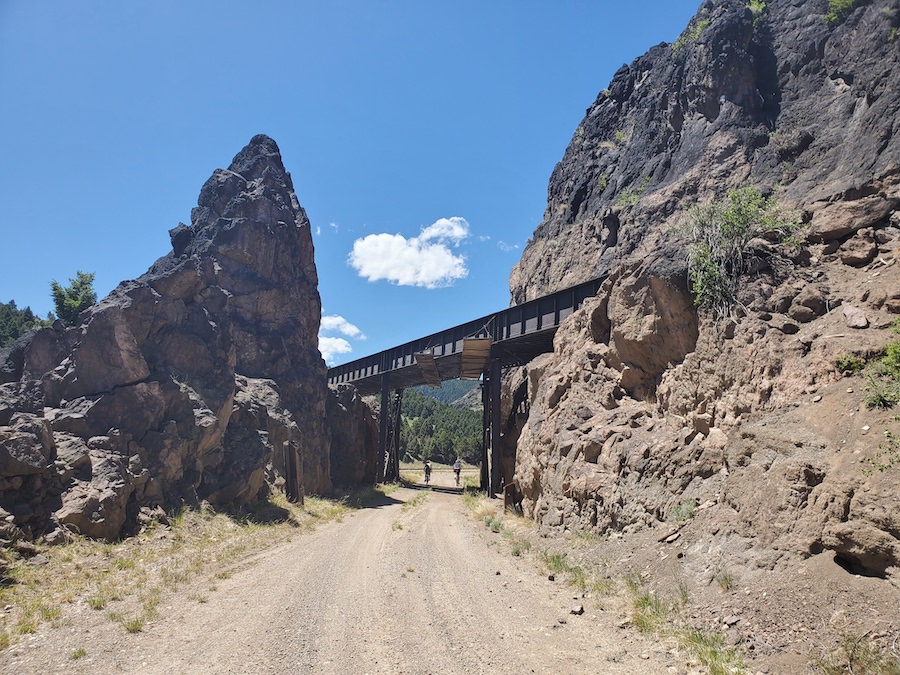
“The whole story of Butte’s mining history is laid out along that trail,” he said. Gibson is in the process of writing a guide to the Silver Bow Creek Greenway Trail that will point out the trail’s significant geologic and historic highlights. Among them are Sherman Butte, where prospectors looked down on a wide bend in the stream and named the waterway “Silver Bow Creek.” Other historical sites include the remains of the old Bluebird Mill, Silver Bow City (where Butte’s mining roots began) and a tailings observation area near Opportunity.
Most of the century-old buildings in Butte trace their beginnings to Butte’s mining heyday. And just across I-15/I-90 from the greenway’s eastern terminus is the World Museum of Mining. The museum sits within the defunct Orphan Girl Mine, which produced some 250 tons of silver. Visitors can travel 100 feet underground to tour the mine’s 19th-century shafts.
Looking Ahead
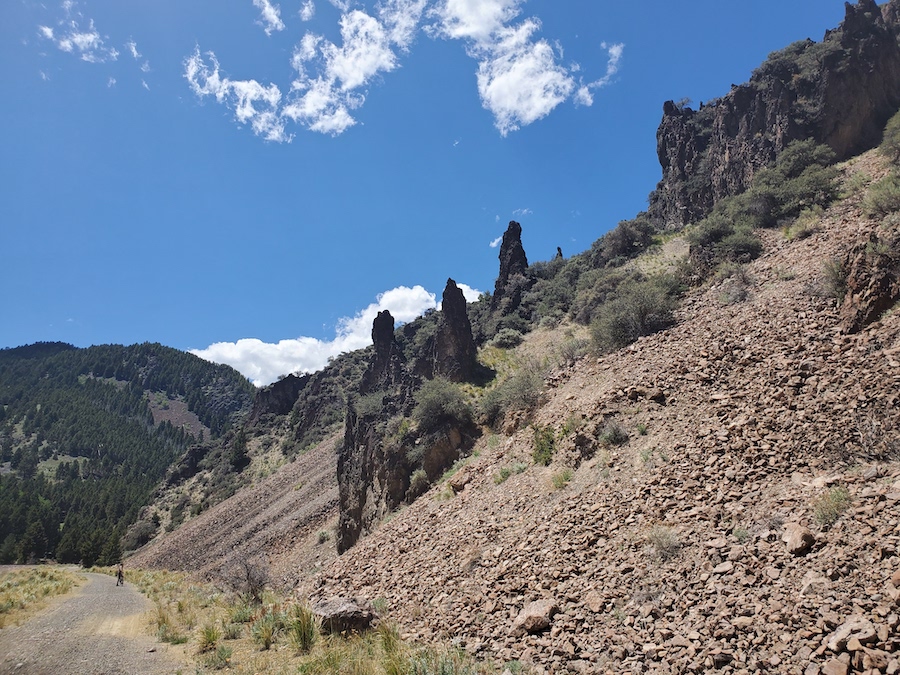
As the trail nears completion, Dori Skrukrud anticipates welcoming outdoor enthusiasts to this corner of Montana. In addition to offering an attractive, revitalized landscape, the multiuse path promises to attract visitors by way of the developing Great American Rail-Trail®, stretching 3,700 miles between Washington, D.C. and Washington State, of which the Silver Bow Creek Greenway Trail will form a section. Near Anaconda, the greenway will also one day connect to the Continental Divide Trail, a 3,100-mile route between the Mexican and Canadian borders.
The trail’s status as a new and incomplete trail means that Skrukrud doesn’t yet have many statistics to prove its positive economic impact. But preliminary survey details indicate 75% of Butte-Silver Bow city and county residents consider local trails “very important” to them and their families, and that 30% of area residents utilize the region’s parks and trails every day.
“We’re confident the benefits will be there once the trail is complete and we add interpretive signs,” said Skrukrud. “Our long-term goal is that the Silver Bow Creek Trail would become a commuter trail for those who work in the area.”
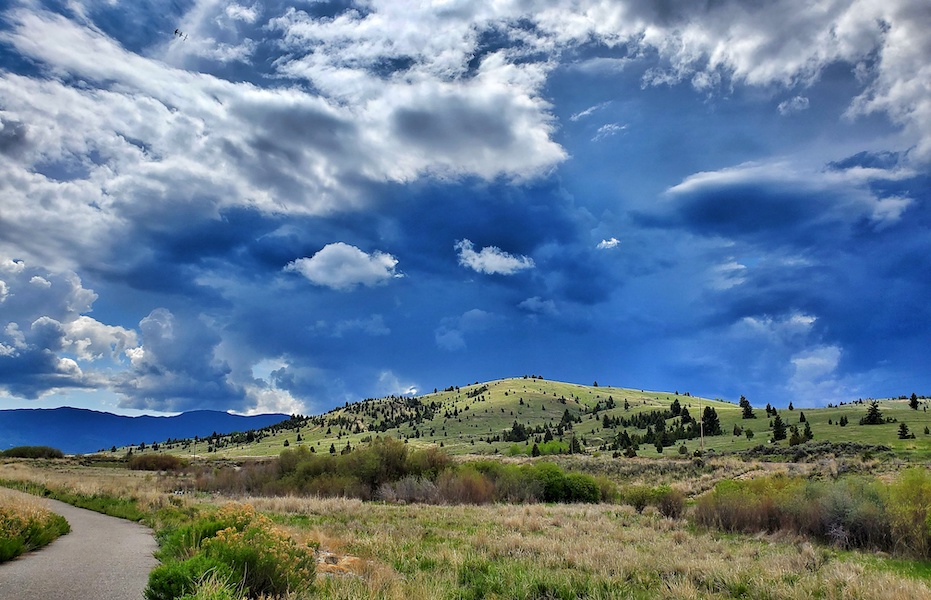
Trail organizers expect the trail to serve as a catalyst for entrepreneurs to build support services as well—cafés, restaurants and bike shops—which will boost the local economy and add to the quality of life for locals. Gibson admits that as much as he enjoys the glimpses of the past provided by the greenway, it is this newfound quality of life that he most appreciates.
“As a 75-year-old, I really love the fact that the Silver Bow Creek Trail exists,” he said. “I can get out there and enjoy the beautiful landscape year-round. And while I’m only beginning to see out-of-towners use the trail, as it develops, I know that will change.”
In addition to enjoying the new trail for recreation—including Nordic skiing, skate skiing, inline skating, biking and running—Griffin, the retired hydrogeologist, also finds himself continually tracking the waterway’s ability to heal itself. He leads hands-on K-12 science programs through Montana Technological University’s Clark Fork Watershed Education Program, teaching kids how to collect water samples, assess the health of the waterway and understand the importance of preserving water quality.
“I have a passion for following the life of this creek, for watching what we have now in our newly rebuilt environment,” said Griffin. “I remember when the Silver Bow Creek had large dead spots and there was no life in the water. Now, when you follow the trail over the creek’s pedestrian bridges, you see people fishing. It’s remarkable.”

Donate
Everyone deserves access to safe ways to walk, bike, and be active outdoors.
